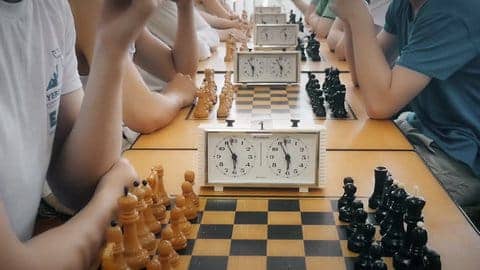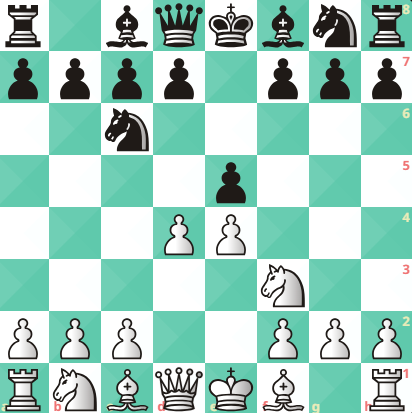Mastering Chess Puzzles: The Best Strategies to Solve Tactics Correctly!
Mar 14th, 2025
Chess puzzles are an excellent way to sharpen your tactical vision and improve decision-making skills during real games. By regularly solving puzzles, you train your mind to quickly recognize patterns, anticipate threats, and execute strong moves with precision. Over time, this reduces blunders and enhances overall playing strength.

Why Solving Puzzles is Crucial for Chess Improvement

Practicing chess puzzles helps you:
✔ Improve tactical awareness to spot threats and opportunities.
✔ Enhance calculation skills for accurate move sequencing.
✔ Develop pattern recognition to identify recurring tactical motifs.
✔ Strengthen problem-solving abilities under time constraints.
Steps to Solve Chess Puzzles Effectively
1. Identify Tactical Motifs
Before making a move, recognize key tactical elements in the position:
🔹 Loose or undefended pieces.
🔹 X-ray attacks through diagonals or files.
🔹 Pieces aligned on the same rank, file, or diagonal.
🔹 Weak king position vulnerable to checks and mates.

2. Consider Candidate Moves
Focus on forcing moves first—checks, captures, and threats (CCT). These are often the foundation of successful tactics. Always scan for moves that can directly influence the opponent’s king or material balance.

3. Calculate All Variations
Calculation is the heart of chess tactics. Before making a move:
✔ Analyze all possible responses from your opponent.
✔ Look for forcing sequences (checks, captures, and threats).
✔ Visualize different variations in your head without touching the pieces.
A strong player doesn’t rely on trial and error but calculates deeply to ensure the chosen move is correct before executing it.

4. Recognize and Name the Tactic
Once you find the best move, identify the tactical theme behind it—such as a pin, fork, skewer, discovered attack, or double check. Naming these tactics reinforces learning and helps in recalling them during real games.

5. Verify the Solution
Double-check your answer by ensuring:
✔ No better move is available.
✔ The opponent’s best defensive responses have been considered.
✔ The solution leads to a decisive advantage (winning material, checkmate, or significant positional gain).

Tips for Efficient Puzzle Solving
✅ Start with easier puzzles and gradually increase difficulty.
✅ Use a real chessboard if visualization is challenging.
✅ Set a time limit to simulate practical game situations.
✅ Learn from mistakes—review incorrect solutions and understand what went wrong.
At first, this process might seem slow, but with practice, your mind will process tactical patterns instantly, leading to stronger play over the board.

Practical Examples of Tactical Solving
Example 1
Position Analysis: White’s king is exposed, a rook is active on the 2nd rank, and both bishops are aimed at the king.
Steps to Solve:
- Tactical Motifs – Weak king, aligned pieces, active bishops.
- Candidate Moves – Consider Bxc2 and Rxc2.
- Calculation:
- 1… Bxc2 2. Qxc3 → White wins.
- 1… Rxc2 2. Kb1 Rb2 3. Ka1 (or Kc1) Rb1# → Checkmate!
- Recognized Tactics – Discovered attack & double check.
- Verification – The solution is correct. ✅

Example 2
Position Analysis: White’s king is weak, and Black’s king is highly active, creating attacking chances.

Steps to Solve:
- Tactical Motifs – Weak back-rank, active king, open files.
- Candidate Moves – Consider Rxg4 and Rc1.
- Calculation:
- 1… Rxg4 2. Rd5 Ke3 3. Nd1 → Discovered attack, Black loses.
- 1… Rc1 2. Nd1 Rf1 3. Kxf1 Rxd1 4. Kg2 → The king escapes, White wins.
- 1… Rc1 2. Nd1 Rxd1 3. Kxd1 Rf1# → Checkmate!
- Recognized Tactics – Sacrifices leading to a back-rank checkmate.
- Verification – The solution is accurate. ✅
Final Thoughts

Mastering chess puzzles requires patience, consistency, and strong calculation skills. The key is to train your mind to think logically and systematically. When solving puzzles, don’t rush—calculate deeply, understand tactical motifs, and refine your pattern recognition. Over time, these skills will seamlessly integrate into your games, making you a more formidable player.
𝐇𝐚𝐩𝐩𝐲 𝐬𝐨𝐥𝐯𝐢𝐧𝐠! ♟♜♞
𝐑𝐞𝐚𝐝𝐲 𝐭𝐨 𝐄𝐥𝐞𝐯𝐚𝐭𝐞 𝐘𝐨𝐮𝐫 𝐂𝐡𝐞𝐬𝐬 𝐒𝐤𝐢𝐥𝐥𝐬?
Join the Madras School of Chess, where champions are made! Whether you’re a beginner or an advanced player, our expert coaching will help you master the game.
📍 Locations: T.Nagar, Anna Nagar, Mandaveli & Online
📞 Call: +91 98404 03376
🌐 Visit: www.madrasschoolofchess.com
Start your journey to chess mastery today! ♟️🚀
© 2024 The Madras School of Chess
Created by Webdzo